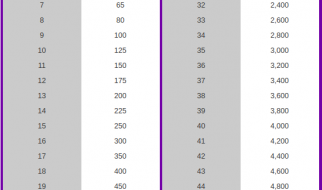Make no mistake, size does matter. Although it is not something that should obsess us if a minimum is necessary.
Of course, I am talking about the size of the market, a key variable to understand the potential of a project. But calculating it is not easy: it is difficult to find data and there are several ways to do it ? which is the best?

A few years ago I was analyzing the size of the market for my new project, and I had the question of what figure to use to assess how big the opportunity was (the famous market size)? and of course, the doubts appear: What do I consider as my market? The world of entrepreneurship in general? What am I going to provide?
Fortunately, there are three approaches are used there to value the market: TAM, SAM and SOM ? and I found the way to approach it so interesting that, I thought it would be interesting to share it with you following my policy of sharing everything I learn 🙂
These figures are especially important when we are going to look for investment for our project since it will be one of the first questions investors will ask you ? given that it allows them to get an idea of ??the overall potential of the project, and of the possible total route it may have. the project.
HOW TO MEASURE THE MARKET SIZE WITH TAM, SAM, AND SOM?
- TAM ? Total Addressable Market (Total or addressable market) Itaims to model how big is the universe we are targeting and serves to analyze how big the business opportunity is, or in other words, its total potential if the model later of business pivots. To calculate it in more or less known markets we can use the sum of the turnover of all its main competitors globally, or go to existing studies where the volume of the market is indicated. If this information does not exist often the best we can use are guesstimations (or estimates constructed from bottom to top .. thanks Mario !) with which to reason and get an idea of ??the total demand potential of the business.
- For example, as we are proposed in this thread , we are going to use the car market. Imagine that we are going to set up a platform to sell sports cars on the Internet. Our TAM would be the world market for ?light? vehicles, approximately 79 million units per year.
- SAM ? Serviceable Available Market (Mercado we can serve)gives an idea of the size of the market that we serve with our technology and business model today. It serves to assess the growth potential of the company under current conditions, that is, offering the services and products that we have defined.
- Continuing with the previous example, the SAM of this business would be the number of annual units of sports cars that are sold through the Internet (that is, what we could achieve at most with the current business model). Given that it is difficult for this figure to be available, here we should make a guesstimation reasoning, for example: If the% of sports cars is 5% of the car market (that is, they are 3.95 million units/year) and of On average 3% of cars are sold online, our SAM would be 118,500 units per year.
- SOM ? Serviceable Obtainable Market (Perhaps the most important market), serves to assess the potential in the short/medium term that we can realistically obtain with the resources that we are going to invest in obtaining clients?. In other words, it not only values ??the size of the current market but also the piece or percentage of the market that we can capture with the resources we have and our current recruitment strategy.
- For example, in the previous case, the 118,500 units would be the total market that we can reach ? but given our current investment in recruitment (for example based on Internet advertising, use of a call center ? etc) we think that the first year would be reasonable To think that we could sell 500 cars, the second 950, the third 1500 ? etc (note, they are invented figures, it is a number that must be analyzed depending on the marketing/sales strategy we use)
In summary, according to our example, we would have:
- TAM: 79 million pcs. / year (cars)
- SAM : 118,500 units / year (sports cars online)
- SOM: 500 pcs. / year (what we plan to capture, the first year)
The usual way to represent them is with concentric circles, style:

The ideal is to calculate these figures in euros (or dollars), but often we will not have that information, so it may be worth analyzing how many customers there are in that market, the basis for calculating the volume of business that we can move.
Another key aspect is knowing in what percentage the market grows ( good !) Or decreases ( bad !) Since the TAM SAM and SOM are not static variables but will evolve over time ? so we should consider an annualized analysis at 3 ?5 years of how they will evolve.
How to calculate the SOM or market that we can capture?
One of the most common mistakes when posing what our market is like is what is known as the 1% fallacy :
If my market is China, I believe that in the second year it is feasible to capture 1% of the market.
On paper, it seems reasonable ? but let?s scratch a bit: If China?s current population is around 1,350,695,000 inhabitants, and my target is people between 15 and 59 years old, my potential market is 945,486,500. 1% of that is 9,454,865 ? which means that in year 2 I am going to attract almost 9.5 million customers, something that is probably not consistent with my recruitment strategy.
This is the traditional way of building the figures from top to bottom, something that is not usually a good idea if we are not VERY knowledgeable about the market in question AND the real effectiveness of our recruitment strategy in that market.
It is much better than the SOM is built from the bottom up, that is: I will capture it with telemarketing agents. I have 5 people, who will make an average of 100 calls a day ? that is to say, in total, we will have 500 calls/day. From those calls, I think the effectiveness will be 5% at most, so I think I will get 25 clients a day. If a month has 20 working days, during that period I will be able to get 20×25 = 500 clients. If we work 12 months, in one year I capture 6,000 clients?. THIS is my real SOM ( surely the process is familiar to the regulars of the blog ? since it is applying the famous funnel or conversion funnel )


